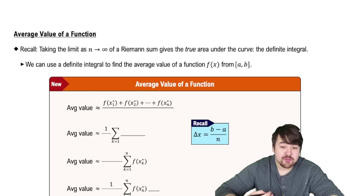Horizontal and Vertical Asymptotes
Use limits to determine the equations for all horizontal asymptotes.
_____
√x² + 4
c. g(x) = -----------
x
 Verified step by step guidance
Verified step by step guidance Verified video answer for a similar problem:
Verified video answer for a similar problem:



 5:21m
5:21mMaster Finding Limits by Direct Substitution with a bite sized video explanation from Patrick
Start learning